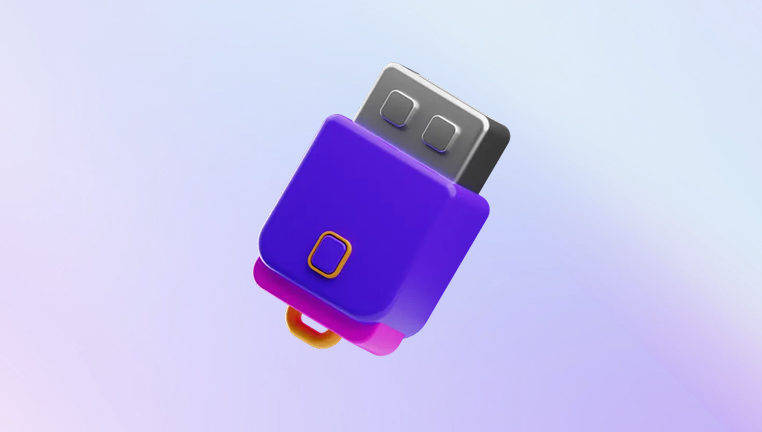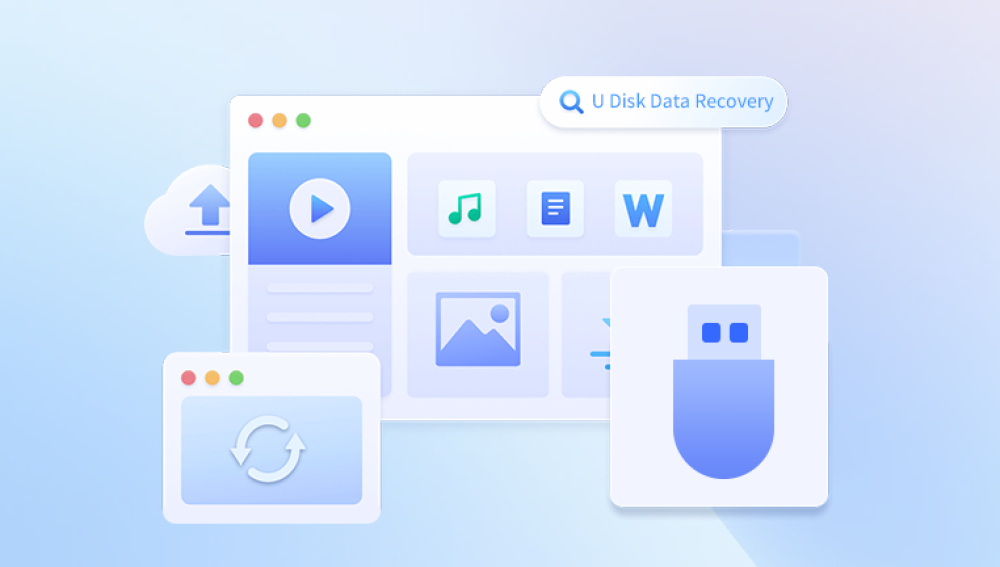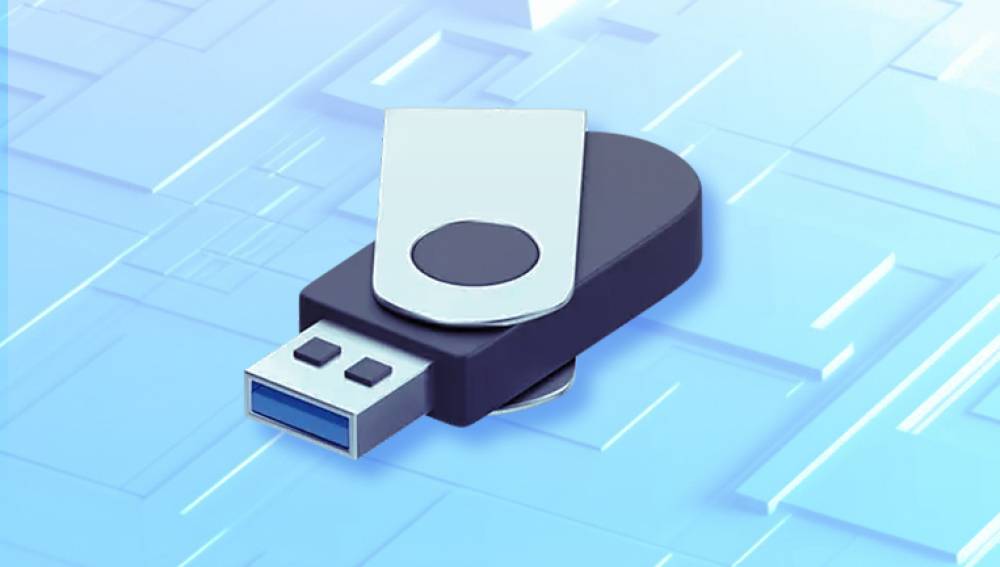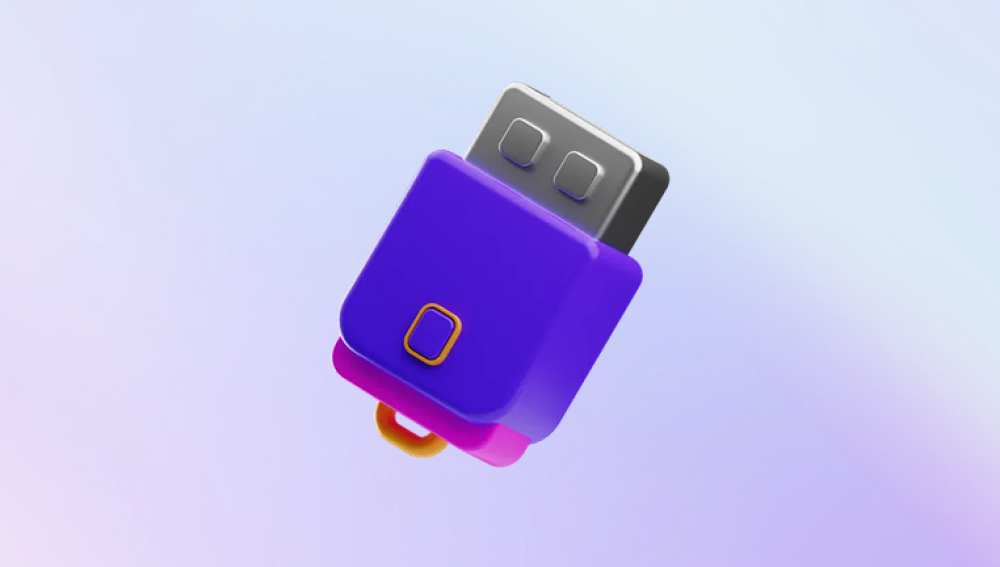USB flash drives have become essential for data storage and transport due to their convenience, portability, and capacity. Whether you're storing work documents, photos, videos, or backups, a flash drive offers a fast and efficient way to carry and transfer data. But like all forms of digital storage, flash drives are not immune to data loss. Files can vanish due to accidental deletion, formatting, virus attacks, corrupted file systems, or improper ejection. The good news is that, in many cases, lost files on a flash drive can be recovered.
1. Common Causes of File Loss on Flash Drives
Before attempting recovery, it helps to understand why files go missing from a flash drive. Identifying the root cause increases your chance of successful recovery and helps you choose the most suitable recovery method.

1.1 Accidental Deletion
The most frequent reason. You may have deleted a file by mistake or used Shift + Delete, which bypasses the Recycle Bin.
1.2 Formatting
Accidentally formatting a flash drive can erase all data, although the data often remains on the disk until overwritten.
1.3 Virus or Malware Attacks
Some viruses hide or delete files. Others corrupt file structures, making your data inaccessible.
1.4 File System Corruption
Removing the drive improperly or sudden power loss can corrupt the file system, making the drive unreadable.
1.5 Physical Damage
Water exposure, drops, or heat can physically damage the USB drive, potentially leading to permanent data loss.
1.6 Software Conflicts
Using the drive on incompatible or outdated operating systems can sometimes cause data access errors.
2. Initial Steps Before Recovery
Before using any recovery tool or software, take these preliminary actions to prevent further data loss.
2.1 Stop Using the Drive Immediately
Do not copy, move, or write new files to the flash drive. Writing new data could overwrite the lost files, making recovery impossible.
2.2 Check Hidden Files
Sometimes, files are not deleted but are hidden due to malware or system settings.
To check for hidden files:
Open File Explorer (Windows)
Click on the View tab
Enable Hidden items
For macOS:
Press Command + Shift + . (dot) in Finder to toggle hidden files.
2.3 Try a Different USB Port or Computer
A faulty USB port or driver may make it seem like your flash drive is empty or unreadable.
3. Method 1: Use File Explorer and Attributes Command (Windows)
If your files are hidden or affected by a virus that changes file attributes, you can recover them using the Command Prompt.
Steps:
Plug in your USB flash drive.
Press Windows + R, type cmd, and press Enter.
In the Command Prompt, type:
bash
CopyEdit
attrib -h -r -s /s /d X:\*.*
Replace X: with the correct drive letter.
Press Enter. This command will remove hidden, system, and read-only attributes from all files on the drive.
Check the drive again in File Explorer. Hidden files should now be visible.
4. Method 2: Use Data Recovery Software
If your files were deleted or lost due to formatting or corruption, recovery software is often the most effective solution.
Recommended Software:
Drecov Data Recovery
Recuva
EaseUS Data Recovery Wizard
Disk Drill
Stellar Data Recovery
Step-by-Step with Drecov Data Recovery:
Download and install Drecov Data Recovery on your computer.
Launch the software.
Select your flash drive from the list of storage devices.
Choose a Quick Scan or Deep Scan (deep scan is more thorough).
Let the software scan for lost files.
Preview the results—check file names, types, and content.
Select the files you want to recover.
Click Recover and save them to a safe location on your computer (not the flash drive).
Why Use Drecov Data Recovery:
Supports all file types (photos, documents, videos, etc.)
Compatible with FAT32. exFAT, NTFS file systems
Works with USB drives, SD cards, and more
Simple interface with high success rates
5. Method 3: Restore from Previous Versions (Windows)
If the flash drive was connected to a system where File History or System Protection was enabled, you might be able to restore previous versions of lost files.
Steps:
Right-click on the flash drive or folder.
Choose Properties.
Click on the Previous Versions tab.
Select a version and click Restore.
This method depends on prior backup settings and won’t work if File History wasn’t enabled.
6. Method 4: Use CMD to Recover Data (Windows)
The Windows Command Prompt can also be used to recover lost files from a corrupted flash drive.
Steps:
Open Command Prompt as Administrator.
Type the following command:
bash
CopyEdit
chkdsk X: /f
Replace X: with your flash drive's letter.
Press Enter. This will attempt to fix file system errors and recover readable data.
If prompted, confirm fixing the disk.
After the process, check if your files have reappeared. Some may be placed in a folder called Found.000 as .chk files.
7. Method 5: Recovery from a Backup
If you have a cloud or external backup of the lost files, restoring from backup is the fastest and safest solution.
Options:
Windows File History
OneDrive, Dropbox, Google Drive
Manual backups on external hard drives
Browse your backup folder, search for the files, and restore them to your flash drive or desktop.
8. Recovery on macOS
If you're using a Mac, here are ways to recover lost files from a flash drive.
8.1 Use Time Machine Backup
If your flash drive was included in Time Machine backups:
Connect the backup drive.
Open Time Machine.
Navigate to the location of the lost files.
Select the version you want to recover and click Restore.
8.2 Use Terminal to Show Hidden Files
Open Terminal.
Type:
arduino
CopyEdit
defaults write com.apple.finder AppleShowAllFiles YES
Press Enter, then type:
nginx
CopyEdit
killall Finder
Press Enter again. Hidden files should now be visible in Finder.
8.3 Use Recovery Software
Drecov Data Recovery
Drecov Data Recovery offers two powerful scan options: Quick Scan for recently deleted files and Deep Scan for more complex recovery needs like formatted drives or lost partitions. After scanning, users can preview the recoverable files to ensure accuracy before restoring them.
One of the key advantages of Drecov Data Recovery is its high success rate in retrieving files, even in challenging situations. Whether your files were lost due to accidental deletion, virus attacks, or unexpected system crashes, this tool provides a reliable path to restoration.
For users seeking a fast, effective, and secure way to recover lost data, Drecov Data Recovery is an excellent choice. Its versatility, speed, and ease of use make it a go-to solution for personal and professional file recovery needs.
9. Special Cases: RAW, Corrupted, or Inaccessible USB Drives
If your flash drive shows as RAW or asks to be formatted, the file system may be corrupted. Don’t format the drive just yet—use a data recovery tool first.
Steps:
Run a deep scan with Drecov Data Recovery or similar software.
Recover all found files to a safe location.
After recovery, format the drive to fix the file system:
Right-click the drive in File Explorer.
Click Format, choose FAT32 or exFAT, and complete the format.
This restores full functionality while preserving your data.
10. Tips to Prevent Future Data Loss on Flash Drives
Once you've recovered your data, it's time to implement strategies to avoid going through the stress again.
10.1 Always Eject Properly
Never remove a flash drive without using the “Safely Remove Hardware” option.
10.2 Keep Backups
Always store important files in more than one location (e.g., external hard drive + cloud).
10.3 Enable Antivirus Protection
Keep your computer protected from malware that can damage or hide files on USB devices.
10.4 Avoid Using on Multiple Systems
Using the same flash drive on different devices can increase corruption risk.
10.5 Replace Aging Drives
Flash drives have a limited lifespan. Replace yours if it starts to show errors or slow performance.
10.6 Save Frequently
If you’re working directly off a flash drive, be sure to save your work regularly.




